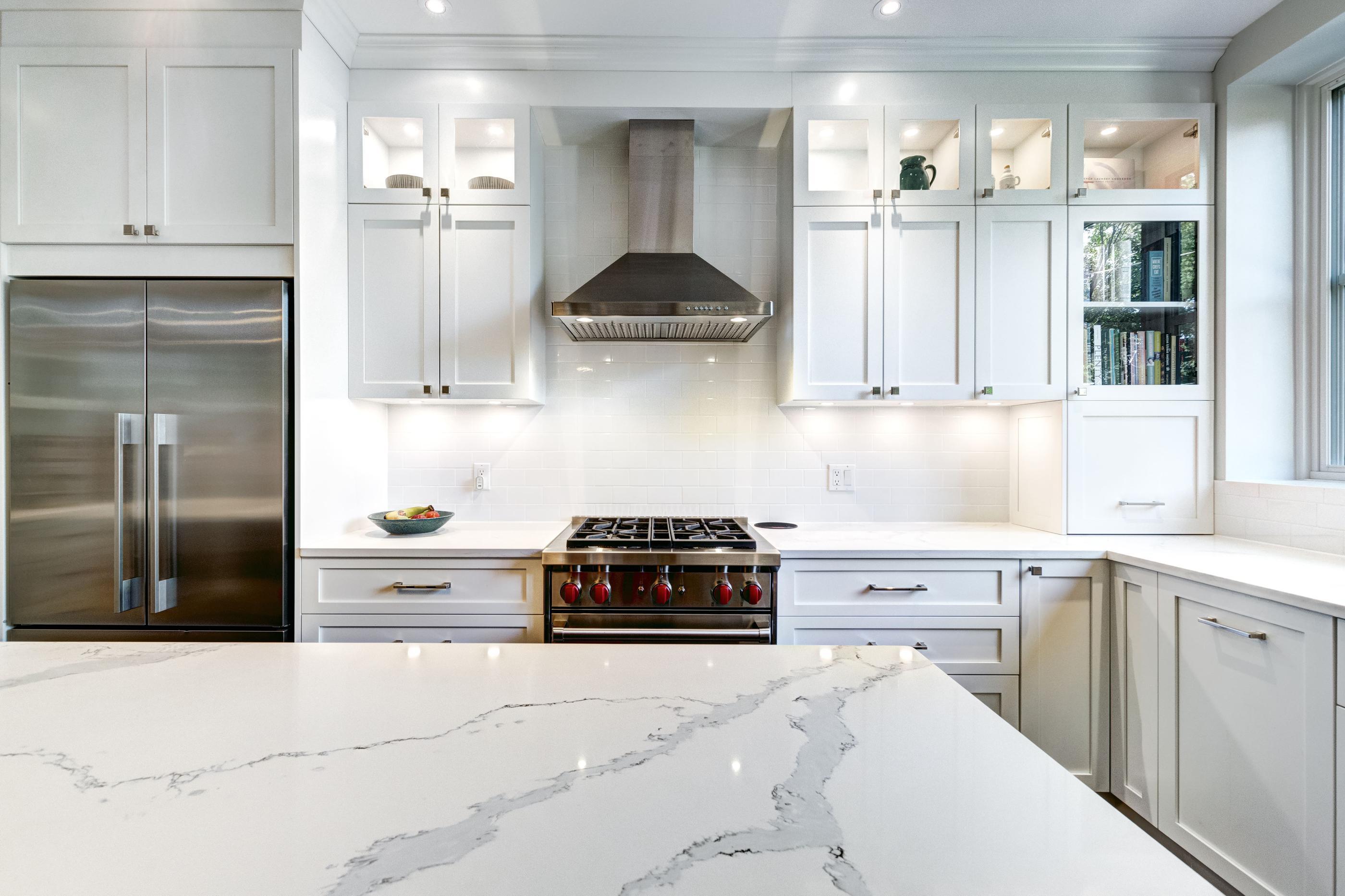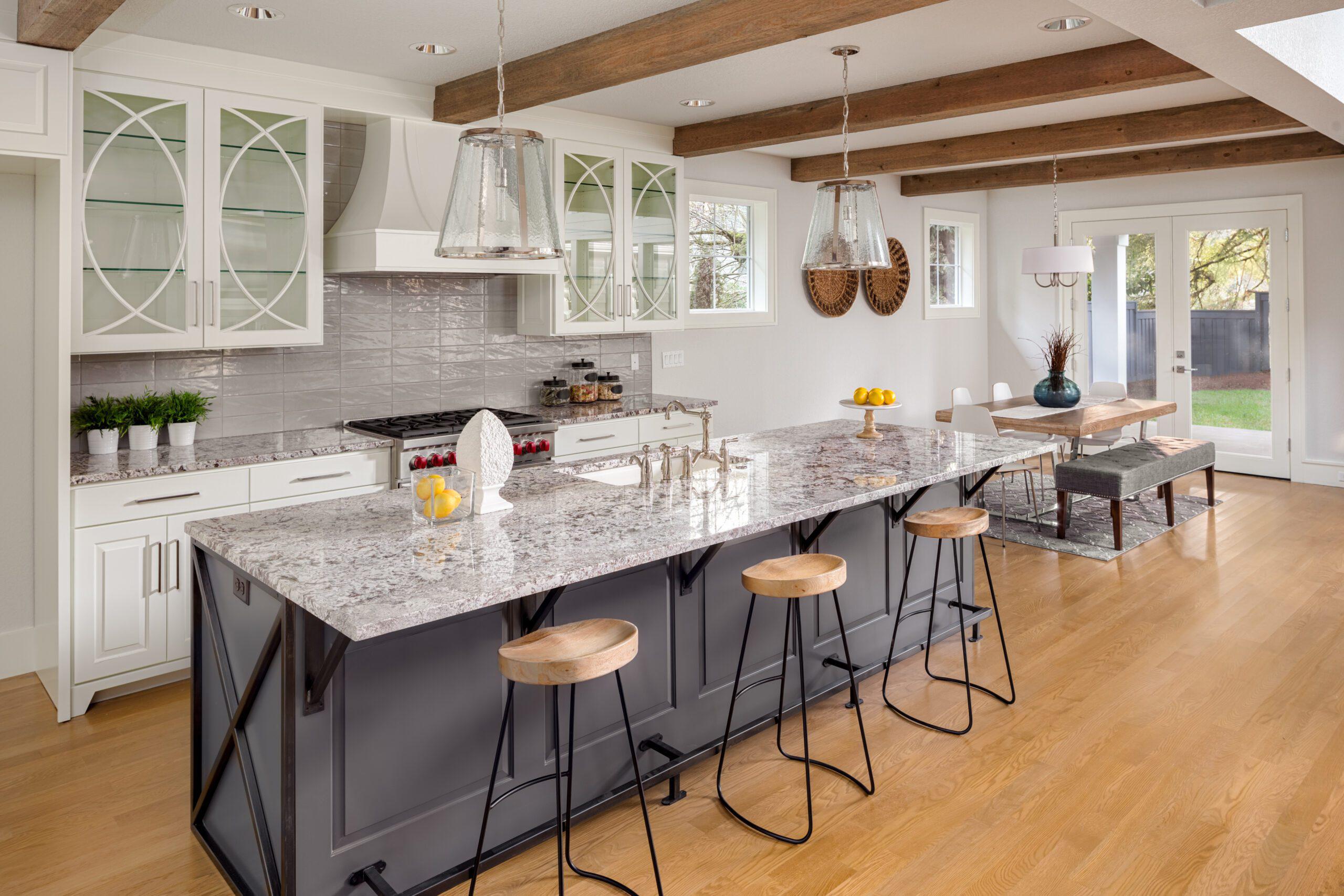Over time, butcher block countertops can become worn and stained but with the right tools and techniques, you can restore them to their former beauty. In this how-to guide, we’ll delve into refinishing butcher block countertops, from preparation to finishing touches.
Can Butcher Block Be Refinished?
Yes, butcher block countertops can be refinished to look like new again. Butcher block countertops may become stained, scratched, or worn due to regular use. Refinishing them can restore their appearance and extend their lifespan.
The process typically involves removing stains, sanding to smooth out imperfections, and applying a fresh coat of finish to protect the wood. However, it’s important to note that the extent of refinishing required may vary depending on the condition of the countertop and the severity of the damage.
Tools and Materials
Before we begin, take note of this list of tools and materials you’ll need to complete the butcher block countertops refinishing process:
- Powdered oxygen bleach (sodium percarbonate)
- Hot water
- Fresh hydrogen peroxide (3 percent solution)
- Wax-and-oil finish suitable for butcher block countertops
- Lint-free, clean cotton cloths
- Butcher block conditioner or mineral oil
- Sponge
- 60-grit sandpaper or sanding sponge
- Protective gear (dust mask, eyewear, gloves)
- Bucket or container for mixing
Setting-up
By following these preparation steps, you’ll create an organized and safe environment for refinishing your butcher block countertops, ensuring a successful result:
Clear your countertops
Remove all items from the countertops, including appliances, utensils, and any decorative items. This will provide you with a clear workspace and prevent any obstruction during the refinishing.
Protect surrounding surfaces
Tape off your kitchen backsplash using painter’s tape and cover surrounding surfaces, such as cabinets and floors, with drop cloths or plastic sheets. This will protect them from dust, spills, and drips during the refinishing, ensuring a clean and neat finish.
Proper ventilation and dust control
If refinishing indoors, it’s recommended to hook up a shop vac or a dust extractor to minimize dust and debris. Additionally, ensure proper ventilation by opening windows and doors or using fans to help dissipate fumes from chemicals and finishes. Good ventilation will help maintain a comfortable and safe environment during the process.
How to Refinish Butcher Block Countertops
From removing stains to sealing and conditioning, follow these instructions to refinish your butcher block countertops.
Removing stains
- Mix powdered oxygen bleach (sodium percarbonate) into a cup of hot water until dissolved.
- Scrub the wood surface gently with the bleach solution for a couple of minutes.
- Allow the bleach to sit for 10 minutes to effectively dissolve stains.
- Rinse the countertop thoroughly with a sponge and cool water.
- For stubborn stains, like wine, apply fresh hydrogen peroxide (3% solution) directly onto the stain using a cotton swab.
Sanding
- Use 60-grit sandpaper or a sanding sponge to lightly abrade the discolored areas of the wood. It’s essential to use a proper technique for sanding wood.
- Be cautious not to sand too much, as this can create unevenness or dips in the surface.
- Always sand in the direction of the wood grain for the best results.
Sealing
- Apply a wax-and-oil finish onto the sanded wood surface.
- Use a lint-free cloth to rub the finish evenly across the countertop.
- Allow the finish to dry for approximately 20 minutes.
- Once dry, buff the countertop with a clean cotton cloth to achieve a smooth and lustrous finish.
Conditioning
- Consider conditioning the wood with a butcher block conditioner or mineral oil.
- Apply the conditioner or mineral oil generously onto the sanded surface, using a lint-free cloth.
- Allow the conditioner or oil to penetrate the wood for several hours or overnight, depending on the product instructions.
- Wipe off any excess conditioner or oil with a clean cloth before proceeding to the sealing step.
How Often Do You Need To Refinish A Butcher Block Countertop?
The frequency of refinishing a butcher block countertop depends on several factors, including the type of wood, the level of use, and how well it’s maintained. In general, it’s recommended to refinish butcher block countertops every 1 to 3 years to maintain their appearance and durability.
However, some countertops may require more frequent refinishing, especially in high-traffic areas or if they’re exposed to excessive moisture and heat. This can apply to all types of butcher block surfaces, whether standard countertops or butcher block kitchen islands. Regular cleaning, oiling, and avoiding harsh chemicals can help prolong the time between refinishing sessions.
Conclusion
Refinishing your butcher block countertops is a simple yet effective way to breathe new life into your kitchen or workspace. By following the steps outlined in this guide and using the recommended tools and materials, you can achieve stunning results and enjoy beautifully restored countertops for years. If you’re considering installation of new countertops, check out what our expert team has for you.




